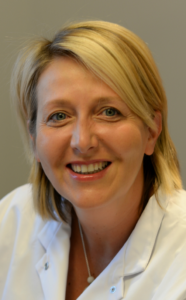By Doctor Muriel Creusot
Want to look less tired this winter? Want to brighten up your face? This aesthetic medicine technique can make you happy again, by correcting your nasolabial folds and expression lines.

With age, the face’s fat compartments shrink and collapse, leading to the appearance of wrinkles and folds. These changes in volume in the face’s mobile areas, mainly those in the mid-face, are responsible for what we call the “negative signs of aging”. Anything that drags the face down accentuates the negative expressions, such as fatigue, sadness or bitterness.
To counter these effects and give a natural, “lift-like” result without adding volume, we use the “Happy Face” injection protocol. Based on precise anatomical points, it tightens up the face and repositions the nasolabial folds and expression lines by “fracturing” any wrinkles and pulling the face upwards.
A precise protocol that is easily repeated
A single entry point is made, which simplifies the technique and is more comfortable for the patient: it is located where the lower zygomatic arch meets a vertical line passing through the middle of the temple. The injections are made with a long cannula (7cm) and are performed in 2 sets of 3 retro-tracing injections.
The first set goes across the nasolabial fold. The end of the first retro-tracing injection is just under the wing of the nostril; the second ends above the lip; and the third is in the middle of the former two.
The second set crosses the expression line area: the first retro-tracing injection ends above the lower lip; and the second and third are located underneath, down towards the chin.
The Happy Face treatment is only performed using Radiesse. As the months pass, this product, which contains calcium hydroxyapatite, creates collagen that will continue to lift the sagging areas, without adding any volume so as not to alter or weigh down the face’s features.
The amount of broken skin is minimal and the expression lines are significantly smoother. Two syringes of Radiesse Lidocaine (1.5cc), one on each side, are used. The cannula should be inserted into the dermo-hypodermal junction, as superficially as is possible for a cannula.
The Radiesse is injected in a retro-tracing fashion, slowly and evenly, and without over-correcting (the product is very precise and non-hydrophilic). Once the injections have been carried out, the practitioner gently models the product to achieve the desired result.
This treatment’s effectiveness is increased thanks to the use of a 7cm cannula, which enables us to extend the lifting effect right down to the chin.
Only Radiesse, due to its composition, can achieve this lifting effect without affecting the facial volumes. If necessary, patients can round off their facial rejuvenation with some hyaluronic acid injections, to plump and reshape the mouth using the latest product, Belotero Lips Shape & Contour.
A natural-looking result
The patients look younger and more relaxed, yet their facial features and expressions remain unchanged. The face looks natural when in movement, as opposed to looking “frozen”. Their negative expressions have vanished, and their mouth is back to its original position as the skin folds are no longer dragging it down. This makes the patient look much happier, which is where the name “Happy Face” comes from. Patients are often surprised at the results achieved with just one syringe of product on each side, and at such an affordable price. This treatment is particularly suitable for people with a long, thin face that is susceptible to ptosis. The “Happy Face” is a straightforward and easily repeated protocol that you should all try!
Technique created by Dr Muriel Creusot, a Belgian dermatologist, who called it the “Happy Lift”. In France, it is called the “Happy Face” technique.
Doctor Muriel Creusot 
Surgical and medical dermatology, skin cancer screening, aesthetic and laser dermatology. Graduated from Montpellier Medical Faculty. Dermatology and venereology degree from Louvain Catholic University, a dermatology department run by Professor Bourlond and Professor Lachapelle.












